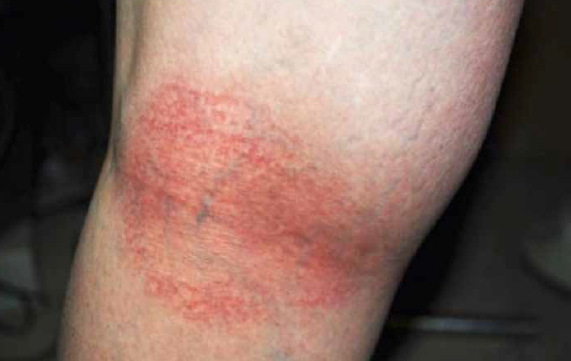Determining the cause of a skin breakout.
A previously healthy 25-year-old female presents with an erythematous, maculopapular rash behind her knees, her lower back along the beltline and within the gluteal cleft shortly after a strenuous tennis match on a hot day.
Which of the following is the most likely etiology of her condition?
Question Answer Choices
- Bacterial infection
- IgE-mediated hypersensitivity reaction
- Loose fitting clothing during activity
- Rupture of clogged sweat ducts
- Urticarial response to elevated temperature
Question Explanation
Correct answer: D. Rupture of clogged sweat ducts
The case patient is presenting with miliaria rubra or “prickly heat” or “heat rash.” This is a heat-related rash that occurs when sweat glands become acutely inflamed due to pores being blocked by macerated stratum corneum. Increased pressure from the blockage causes the ducts to dilate and eventually rupture, forming vesicles within the epidermis and leading to an erythematous, pruritic, maculopapular rash.
Treatment can include antihistamines (especially for the pruritus), calamine lotion, topical steroids, or cleaning with chlorhexidine cream or salicylic acid solution.
Incorrect answer choices:
Recurrent episodes of prickly heat with repeated sweat duct rupture can lead to a “profunda” stage with vesicles deeper in the dermis. This can become a chronic dermatitis, and is commonly complicated by Staphylococcus aureus infection, but the primary rash itself is not caused by bacterial infection (Choice A).
Although the pruritus of prickly heat responds to antihistamines, the pathophysiology is neither an IgE-mediated hypersensitivity (Choice B), nor an urticarial reaction (Choice E).
Prickly heat is more likely to develop when tight-fitting, poorly ventilated clothing is worn during activity. Loose-fitting clothing (Choice C) decreases the risk.



